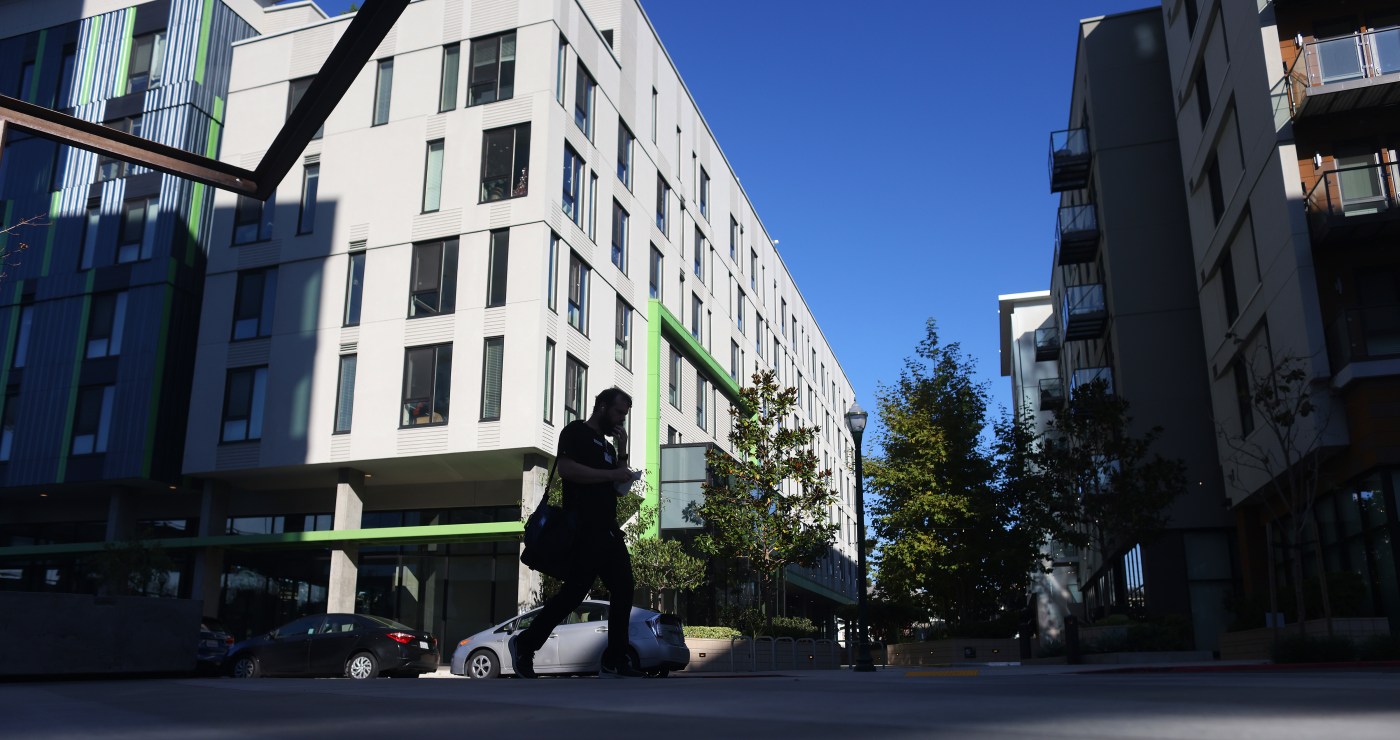Relief was short-lived for Bay Area renters: After nearly a year of stagnation, rents are back on the rise.
The San Francisco metro area, which includes San Francisco and San Mateo counties, saw the median monthly rent rise 1.3% to $3,060 between the first quarters of 2023 and 2024, while Santa Clara County faced an increase of 1.5%, to $2,990, according to real estate data company CoStar.
Renters like Chris Lee and Betty Li are struggling to get their hands on a good deal.
“Everything is priced through the roof,” he said.
But there is an exception: In the East Bay, median rent is on the decline, driven in large part by faltering prices in Oakland. Median rent in Contra Costa and Alameda counties ticked down by 1%, to $2,393 monthly, marking the fourth consecutive quarter of year-over-year declines.
“There’s a big glut in market-rate and luxury housing in Oakland, which is driving this decline,” said Derek Barnes, executive director of the East Bay Rental Housing Association.
As of April, the year-over-year rent in Oakland has dipped 10.3%, according to data from Apartment List.
Deals have emerged for tenants in the city as luxury apartments offer concessions like two free months, hoping to lure renters away from their current homes, said Nigel Hughes, senior director of market analytics for CoStar.
That has a “knock-on effect” for other sectors of the market, as mid-priced units lose out on renters drawn to newer buildings.
“Suddenly, as a renter, you can afford a nicer apartment because of the discounts and concessions,” Hughes said.
Signage outside the MacArthur Commons apartment building on Monday, Nov. 27, 2023, in Oakland, Calif. More apartments are offering concessions to compete for renters’ attention. (Aric Crabb/Bay Area News Group)
The East Bay also has a higher vacancy rate than the San Francisco or San Jose metro areas — hovering around 7%, compared to 5% for the others.
Barnes said that’s in part due to the continued, if slowing “exodus,” from the area. California Department of Finance data shows that Alameda County’s population decreased 0.5%, or about 9,000 people, from 2023 to 2024, while Contra Costa County’s increased modestly by 0.1%, around 1,400 people.
The buildings opening now were planned before the pandemic, when the East Bay’s population — and rents — were on the rise and investors were clamoring to respond to the demand.
“We’re still not seeing the regular routine traffic in the downtown corridors of Oakland that we saw pre-pandemic,” Barnes said.
While Oakland, like the rest of the Bay Area, faces an overall housing shortage — especially for affordable units — it can still take time for those buildings to fill up with renters.
“As those new units are slowly absorbed, rents should even out a bit,” Hughes said. “That development pipeline is slowing down now. Toward the end of the year, we might see some rent growth again.”
Meanwhile, in the San Jose and San Francisco metro areas, increased demand is fueling competition.
Chris Lee and his wife, Betty Li, at their new apartment unit in San Jose, Calif., on Tuesday, May 7, 2024. (Dai Sugano/Bay Area News Group)
After getting married in March, Lee and Li began looking for a one-bedroom together in the South Bay. Li, a teacher’s assistant, wanted to stay in San Jose near the school where she works, while Lee, who works remotely as a freelance product manager, was more flexible.
Related Articles
Who owns that apartment? California agency says it will take millions to find out
Proposed East Bay rental rules would stabilize rents, protect tenants
US rents climbed 1.5 times faster than wages in last four years
Where in California have wages trailed rent hikes the most?
With fewer Californians and more construction, where are the housing bargains?
“I wasn’t very happy with the choices out there,” Lee said. The last time he looked for an apartment was five years ago when he landed a $1,733-a-month studio in South San Jose. But this time, it felt different.
To make matters more complicated, Lee was laid off from a job in tech last year, which limited the pair’s budget. The two hoped to spend just $2,250 per month. By comparison, the average monthly rent for a San Jose one-bedroom is $2,507.
That left them with few options. Although Lee said they wanted to move out of South San Jose, they ended up signing a lease on a one-bedroom in Lee’s existing complex there for $2,245.
An exterior view of the apartment building Chris Lee and his wife, Betty Li, recently moved into is seen on May 7, 2024, in San Jose, Calif. (Dai Sugano/Bay Area News Group)
Unlike in Oakland, landlords in San Jose aren’t quite as desperate for renters.
“They offered zero concessions. They even put us on the first floor,” Lee said. “We feel like we’re the ones who made the concession.”
That’s the type of market renters can expect going forward. The summer months are big months for leasing — and more people looking, means more competition for units.
“There’s an opportunity to push rents a little bit higher,” Hughes said.












